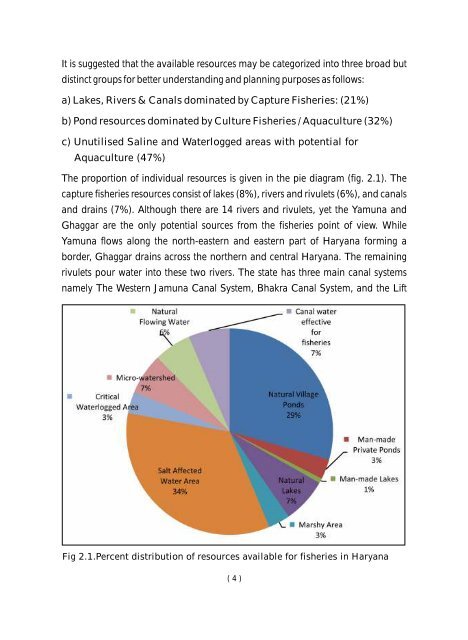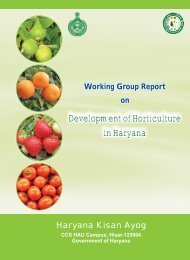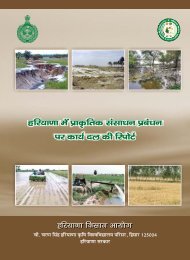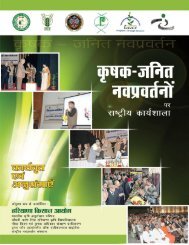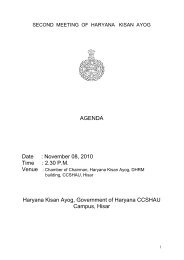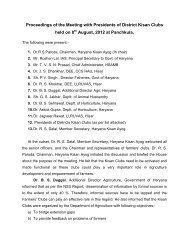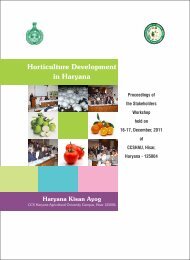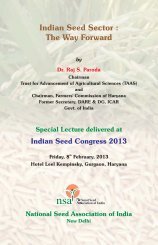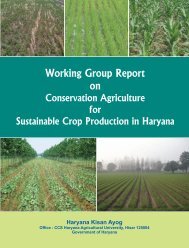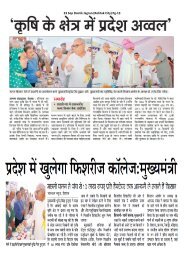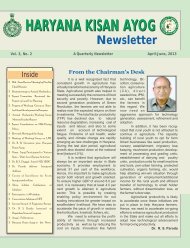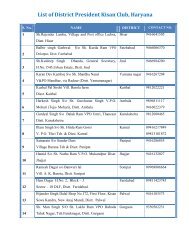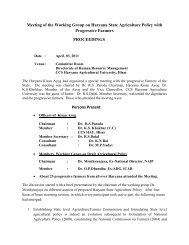Working Group Report on - Haryana Kisan Ayog
Working Group Report on - Haryana Kisan Ayog
Working Group Report on - Haryana Kisan Ayog
- No tags were found...
You also want an ePaper? Increase the reach of your titles
YUMPU automatically turns print PDFs into web optimized ePapers that Google loves.
It is suggested that the available resources may be categorized into three broad butdistinct groups for better understanding and planning purposes as follows:a) Lakes, Rivers & Canals dominated by Capture Fisheries: (21%)b) P<strong>on</strong>d resources dominated by Culture Fisheries / Aquaculture (32%)c) Unutilised Saline and Waterlogged areas with potential forAquaculture (47%)The proporti<strong>on</strong> of individual resources is given in the pie diagram (fig. 2.1). Thecapture fisheries resources c<strong>on</strong>sist of lakes (8%), rivers and rivulets (6%), and canalsand drains (7%). Although there are 14 rivers and rivulets, yet the Yamuna andGhaggar are the <strong>on</strong>ly potential sources from the fisheries point of view. WhileYamuna flows al<strong>on</strong>g the north-eastern and eastern part of <strong>Haryana</strong> forming aborder, Ghaggar drains across the northern and central <strong>Haryana</strong>. The remainingrivulets pour water into these two rivers. The state has three main canal systemsnamely The Western Jamuna Canal System, Bhakra Canal System, and the LiftFig 2.1.Percent distributi<strong>on</strong> of resources available for fisheries in <strong>Haryana</strong>( 4 )


